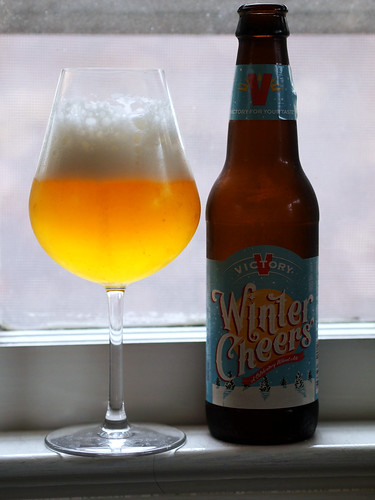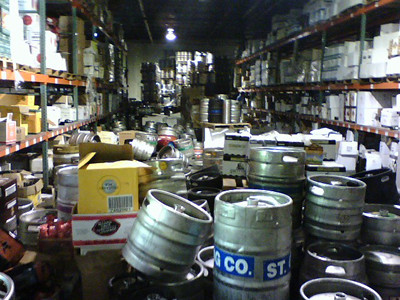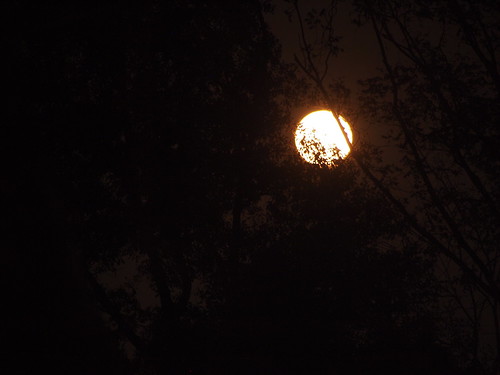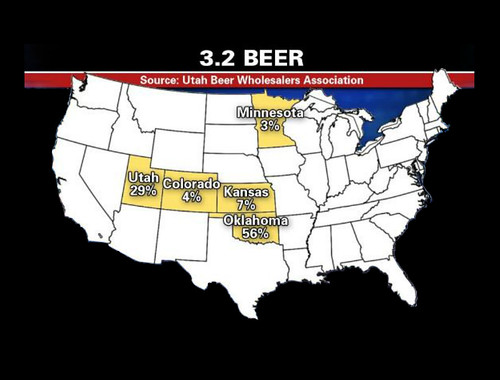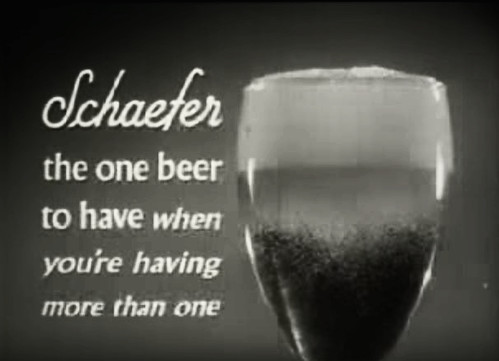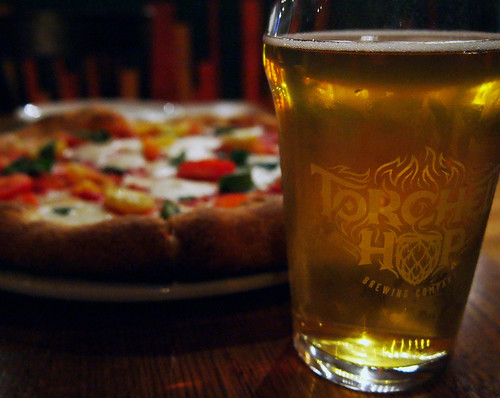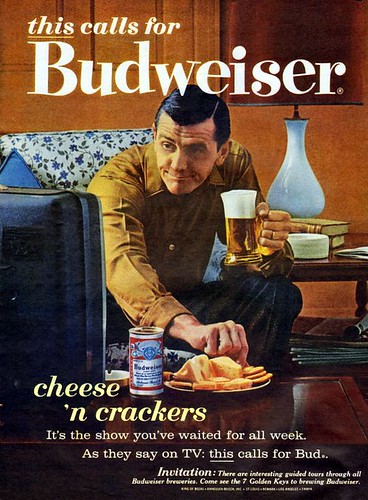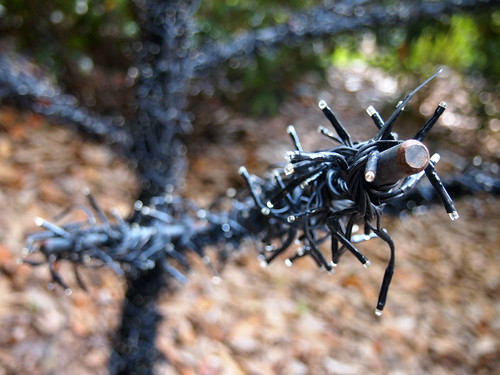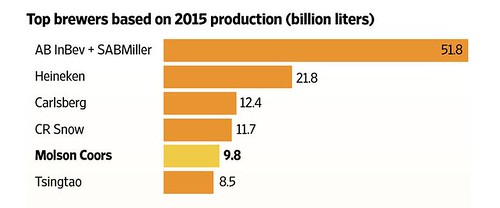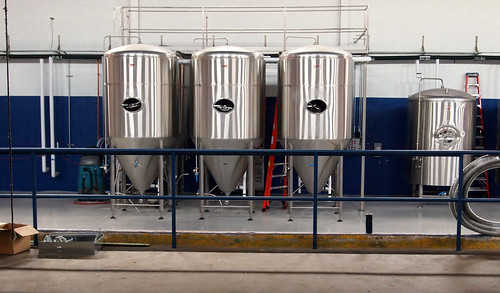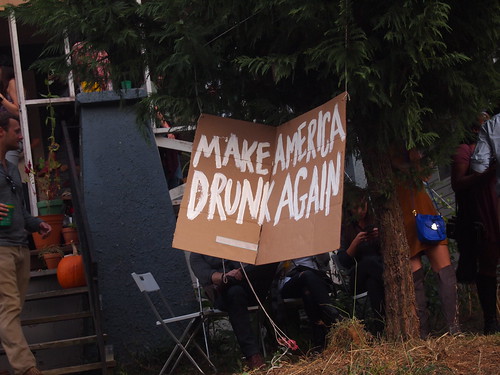Dining partners, regardless of gender, social standing, or the years they've lived, should be chosen for their ability to eat - and drink! - with the right mixture of abandon and restraint. They should enjoy food, and look upon its preparation and its degustation as one of the human arts.
—M.F.K Fisher
Beer for Thanksgiving? Yes! But as to what beer to drink with which dish, let the curators drink alone. There are no rules, but only enthusiastic suggestions.
Be that as it may, maybe a non-dank
pilsner, or a spicy, dry (that's the key)
saison or
dubbel, or, if you're so blessed, a cask-conditioned
bitter: sip, pull, and repeat. (Or, okay, a dry
IPA.) Beer drunk
with cheese; with everything else, don't make beer the star, just the pal. Maybe with sweets, it should be sweeter. Over-hoppy-ed examples? They belong in long special-release queues; over-alcohol-ed, with postprandial digestive stupors.
But, above all, this should be fun. And it's all been done before.
************
A Twist on Tradition: The Right Beer, Dish by Dish
In 1983, the late British beer writer Michael Jackson commented upon American Thanksgiving for the Washington Post. In
A Twist on Tradition: The Right Beer, Dish by Dish, Jackson wrote on drinking beer, not wine, at the Thanksgiving meal. The principles endure, even if the beers have been superseded by latter-day choices.
[N.B. Jackson's essay is unavailable to read at the Washington Post, even via the paper's archive service. Fortunately, The Beer Hunter, Real Beer's archive of Jackson's writing, has preserved it. And, from there, re-printed here.]
A Twist on Tradition: The Right Beer, Dish by Dish
Shared Glass
By Michael Jackson
Special to The Washington Post
Nov 16, 1983.
Everyone knows what to eat on Thanksgiving, but what to drink? The most dismal Thanksgiving I can imagine is the one detailed by Dale Brown in his definitive work "American Cooking": "A glass of spring water stood at each place. No wine here, not ever - except perhaps when the men drank it in the barn." So what should it be next week: A little Seawright Spring Water, from the Blue Ridge Mountains? Or, to be moderately more chic, a glass of Perrier - while the men drink Zinfandel in the garage?
Water taken in moderation cannot hurt anybody, as Mark Twain observed. Those watery celebrants, however, were guilty of what Twain termed "intemperate temperance." There is an idea, whose time has surely gone, that, because they were Puritans, the Pilgrims did not drink alcohol. I have heard of poor souls in New England who, in glorification of this myth, affect to enjoy glasses of cranberry juice with their Thanksgiving meal.
To give thanks is a matter of joy; should that be confined by excessive sobriety? Better still, Thanksgiving is an annual opportunity to refresh old friendships and make new ones, in which matter both the ritual and effect of a shared glass is the best tie.
Wine should be more than acceptable at this feast, for even the most ordinary meal without the grape is, proverbially, like a day denied sunshine. Unless, of course, you prefer beer.
|
| In Europe, whether you drink wine or beer with your meal may depend simply upon where you live. |
|
On this choice between wine and beer, there is a snobbism which is particularly American.
In Europe, whether you drink wine or beer with your meal may depend simply upon where you live.Wine is the natural drink in the hedonistic, warm, grape-growing countries of the South, like France, Spain and Italy. The diligent folk of the Protestant North, whence the Pilgrims came - from The Netherlands and England - grow grain and make beer.
There is some significance, too, in the fact that the social cultures are similarly split on the question of hard liquor. The Catholic South produces various types of brandy; the Protestant North makes gin (in The Netherlands and England) and whisky. As a matter of fact, the birthplace of gin was the city of Leiden, in The Netherlands, one of the points of departure for the Pilgrims. Gin was originally produced as a medicine, and was customarily taken on sea journeys.
Suspicions about the Pilgrims' drinking habits must mount when it is noted that their other two points of departure, London and Plymouth, are the English towns most associated with the distillation of gin. Perhaps there is a vestige of tradition in the only recognized cocktail for Thanksgiving, which is gin-based. It also includes lemon juice (to combat scurvy?) and, incongruously, apricot brandy and vermouth.
The Thanksgiving cocktail is presumably intended as an aperitif, and it sounds moderately awful. Better to precede the meal with a beer and carry on in the same vein. This pays homage to the priorities of the Pilgrims.
When the Pilgrims sought a place to make their permanent landing in America, they did so, according to their diaries, "our victuals being much spent, especially our beer." Having thus landed because they had run out of beer, they probably set out to make some, perhaps using birch sap (Captain Cook did the same with spruce when he landed in New Zealand).
A more conventional type of beer - a darkish and broadly English ale - was last month (October) brewed especially for a commemorative dinner at Plymouth Plantation, the "living museum" of Pilgrim life, in Massachusetts. Such delight has been expressed over this beer that the Plantation now hopes to secure a regular supply from its source, a home brewery called William P. Byrnes.
|
| Just as the wine-drinker can choose a different style to accompany each course of his Thanksgiving meal, so can the beer-buff. |
|
Just as wine has attained a hint of sophistication since the days when it was consumed surreptitiously in the barn, so beer has gained a degree or two of refinement since it was brewed from birch sap. Today's wine drinker has an elegant choice of varieties, styles, vineyards and regions from which to select, and the choice before the beer-buff is arguably even greater. Just as the wine-drinker can choose a different style to accompany each course of his Thanksgiving meal, so can the beer-buff. In either case, so to speak, it might be fastidious to the point of pedantry to plough through six or seven different wines or beers (though it would make for a roseate Thanksgiving); in practice, three or four would be plenty. Let us, nonetheless, explore the possibilities.
As an aperitif, a wine-drinker might well choose a fino sherry: intensely dry, individualistic and with its own freshness and vitality. Precisely the same characteristics are to be found in a magnificent beer called Orval, which is brewed in a monastery in Belgium and is now a quite widely available import in the United States. Like some fine wines, it throws a sediment, so decant it carefully into the glass. It should be only lightly chilled, to what would be a natural cellar temperature, ideally about 55 degrees F. Orval has an alcohol content of more than 4.5 per cent by weight; about 5.75 by volume.
Since the Pilgrims were Protestant, purists might object to a beer from a Catholic monastery. An alternative might be to cleave to the good old Scottish name of Ballantine and the famous American beers behind that label: not the regular beer, nor the basic Ballantine Ale, but the same company's quite different I.P.A. (India Pale Ale). This type of beer was originally brewed by the Scots and English for long sea voyages to the Empire. Ballantine's I.P.A. was first brewed in the Northeast of the United States, where it has a staunch following, though it is now a national product. It is a dry, aromatic ale of about 6.0 per cent by weight; 7.5 by volume. Like all ales, it expresses its palate most fully at a natural cellar temperature.
With oysters, the wine-drinker would opt for Chardonnay, Muscadet or, best of all, Champagne. On the question of beer, there is no doubt: it has to be a dry stout, preferably Guinness or one of the Irish examples like Murphy or Beamish, which are occasionally to be found in the United States. Perhaps it is that dry, tangy quality that makes such a wonderful success of the unlikely marriage between big, black beers and delicate shellfish. No one has been able wholly to analyze the magic, but dry stout and oysters are a long-honored partnership in Ireland. If you feel that an American feast should be more patriotic, substitute a native porter like Pottsville (from Pennsylvania) or Narragansett (originally from New England, of course, though again now national). Serve these beers only lightly chilled or better still, half-and-half with cold Champagne, in a flute. Stouts generally have an alcohol content of around 4.0 per cent by weight; 5.0 by volume.
|
| Two labels are imported: one from the Lindemans farmhouse brewery and the other under the commercial Belle Vue trademark. |
|
For both wine and beer, one of the most difficult relationships is with salad, whether savory or fruity. Wine-writer Hugh Johnson has an interesting approach to this question: the character of a wine is assassinated by vinegar. So, in your salad dressing, use wine instead. An impudent extension of this theory would be to use a wine-like beer. This is an opportunity to try one of the world's most unusual beer-types: gueuze, a specialty of the Senne valley, near Brussels. This is one of those beers that gain a special fruitiness from the use of wheat in addition to the normal barley. More important, as in traditional wine-making, it is fermented with wild yeasts, in wooden casks. It has a tart, vinous, perhaps even cidery, character and is in its native country regarded as the most refreshing type of beer for summer. Two labels are imported: one from the Lindemans farmhouse brewery and the other under the commercial Belle Vue trademark. To serve gueuze with (and in) a salad might prove quite a coup. An even bolder stroke would be to present its companion beer, kriek, with a fruit salad. This is a beer of the same basic type but with the addition of dark cherries in the maturation cask. Both Lindemans and Belle Vue have kriek beers in the American market. Gueuze beers generally have an alcohol content of around 4.5 by weight or 5.5 by volume. Kriek comes out at about 5.0; 6.0. They are best served lightly chilled. Alternatives might be the German wheat beers, Berlin weisse and Bavarian weizen respectively. There is no American counterpart to any of these products at the moment, though wheat beers were produced in the U.S. before Prohibition and one brewer is toying with the idea of reintroducing them.
With the centerpiece of the meal, the turkey, the wine-drinker has a difficult choice. Should it be a medium-dry white? Or a drier, medium-bodied red? Among beers, I would opt for a pale but medium-dry brew of the type produced in the city of Munich and elsewhere in Bavaria. This type of beer features in the extensive portfolios produced by all the famous Munich brewers: Augustiner, Hacker-Pschorr, Hofbrau, Paulaner and Spaten. In this instance, though, check to make sure that what you are buying is described in one way or another as the brewery's Light beer. It may be designated as Munich Light, Light Reserve or Light Export or have some similar sobriquet, perhaps even the irreverent-sounding German counterpart Hell. These descriptions refer to a light color, and most definitely not to body; nothing quite like these beers is produced in the U.S., and they are not intended to quench the thirsts of footballers.
With just a hint of sweetness to match some of the turkey's accompaniments, these Munich Light beers have plenty of body without being too filling. Their alcohol content is pretty ordinary, at well under 4.0 per cent by weight or 5.0 by volume. As for serving temperatures, the simplest rule to observe is that any beer from Munich or elsewhere in Bavaria should be served chilled but not to American popsicle level; not less than 48 degrees, in fact.
A more pronounced sweetness is clearly required to go with the pies, and this might be a case for the chocolate-colored Munich dark (around 4.0; 5.0) or the stronger, amber Marzen or Oktoberfest beers (4.5; 5.5), from the same selection of breweries. Among dark beers alone, these Munich breweries produce so many different varieties that intrepid drinkers have a considerable challenge on their hands. It might be advisable at this stage to retire gracefully, but you don't have to....
After dinner, instead of a brandy or port, the determined drinker will return to Munich for a bock, (5.0; 6.25) or even a double one, a doppelbock, (6.0; 7.5). All double bock beers have names ending in -ator, in deference to the original, Salvator ('Saviour'). This sounds like a suitably religious beer with which to salute the Pilgrims, though celebrator is another fitting label. Only the brave will try E.K.U.'s Kulminator '28', which has an alcohol content of around 10.0 per cent by weight, 12.5 by volume and is the strongest regularly-produced beer in the world.
By the time the nuts come round, anyone still fit to drink might opt for a Madeira or perhaps a sweet stout like Mackeson, from England, at around 4.0; 5.0. Serve this one at room temperature, preferably in a big, leather armchair.
Some foods are perhaps less well suited to wine than to beer. Shellfish go well with either but sushi, for example, has a happy relationship with a light Japanese or American beer. The same is true of any spicy Oriental food. Naturally enough, smoked meats and sausages are perfectly accompanied by German beer. Perhaps the happiest combination of all is red meat, especially roast beef, with English Pale Ale. Here are some simple guidelines.
As an aperitif: Dry, hoppy beers with some bitterness. Try New Amsterdam (from New York) or Anchor Steam (San Francisco).
With fish: Pilsners. Almost all of the well-known American beers are loosely of this style. So are the best-known imported brands, like Heineken and Carlsberg. Czech and German Pilsners tend to be drier, and therefore go especially well with the more oily varieties of fish.
Shellfish: Dry stouts or porters.
Smoked meats, sausages: If you can find it, the smoked Rauchbier of Bamberg, Germany. Or a German altbier or weizenbeier.
Pasta: The less spicy pasta dishes of Northern Italy go quite well with the Munich Dark type of beer. It is, after all, commonly served with the admittedly-heavier noodle dishes of Germany.
Fowl: Munich Light with turkey; perhaps the slightly less sweet Dortmunder style might go better with chicken.
Red Meat: English Pale Ale.
Game: Scottish ale, which is heavier.
The myth that American beers are especially weak derives in part from the use of U.S. regulations of the alcohol-by-weight measure. This produces lower figures than the measure of alcohol by volume. A typical American beer of 3.75 alcohol by weight would have almost 4.7 by volume. This is typical of ordinary beers in many parts of Europe. The beers mentioned in this article are inclined to be stronger because they are specialties. Alcohol by volume is the best guide for the shopper because it is the system used on wine labels. Beer is, of course, the more filling of the two drinks, though wine is stronger, at 11.0-13.0 by volume in most cases. Anyone planning to sample a beer with every course at Thanksgiving might consider using goblets like those employed for red wine. An eight-ounce serving of beer with each course should be plenty.
The style of beer familiar to Americans is, in connoisseurs' language, a lager broadly of the Pilsner style, which originated in Bohemia, Czechoslovakia. However, 'beer' is a general term which covers many other styles, including ale, porter and stout.
-----more-----

